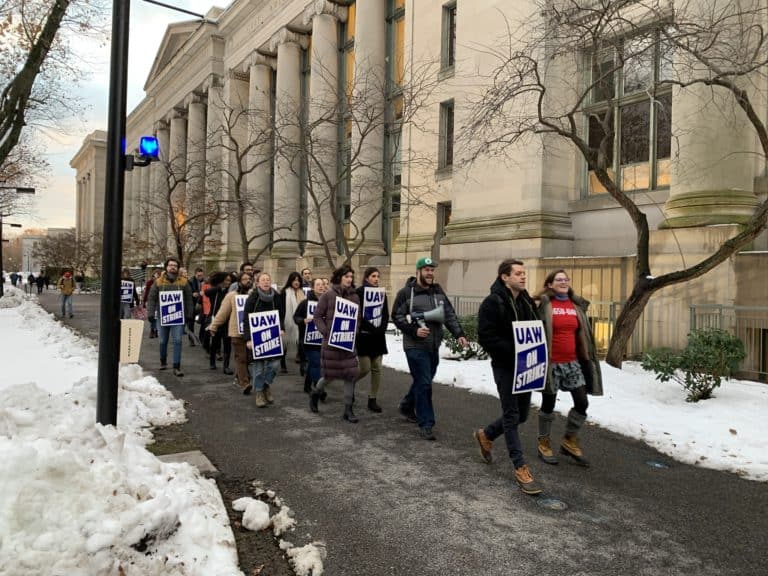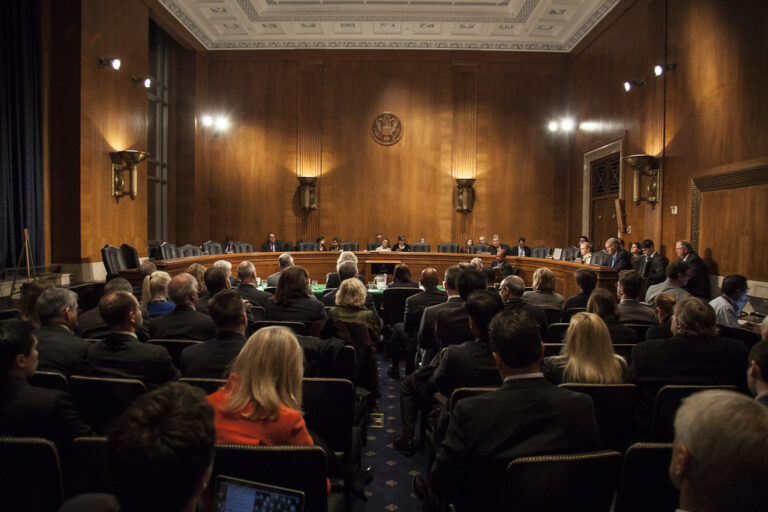Add Amazon to the growing list of companies to be hit with an employment classification suit. The San Francisco Chronicle reports that a proposed class-action lawsuit on behalf of drivers of Amazon’s new Prime Now service has been filed in California Superior Court. The suit alleges that the drivers have been misclassified as independent contractors and that the company has exploited this misclassification to commit minimum wage, overtime, and reimbursement violations. “These are human beings; they are not drones,” says Beth Ross, the lead attorney on the case, who also recently successfully litigated similar claims regarding FedEx drivers. Ross further notes that unlike Uber or Lyft drivers, Amazon exerts much more control over its Prime Now drivers: “Drivers wear Amazon polo shirts and hats. They are scheduled to work set shifts of six to eight hours, for five to seven days a week. They stand in line at Amazon fulfillment centers, where an Amazon dispatcher gives them several packages to deliver from their personal vehicles during a two-hour window. They then return and line up for more assignments.”
Not to be outdone, Uber has also attracted its fair share of attention recently. As the company celebrates its fourth anniversary of doing business in Massachusetts, the Boston Globe dissects a feature of Uber’s service that has likely contributed to its success in the Bay State and elsewhere: a presumption (policy?) against tipping. The Globe notes that although Uber’s website claims that “there’s no need to tip” drivers, many drivers accept and appreciate tips, and some drivers have even gone so far as to organize a social media campaign to compel the company to offer passengers the option to tip. Notably, Uber’s main competitor — Lyft — allows passengers to tip through its app, resulting in tips on “20 percent to 50 percent” of rides (according to driver interviews). Uber drivers, however, report being tipped “less than 1 percent to 5 percent” of the time.
Over at The Verge, Josh Dzieza offers a lengthy treatment of the rating system made popular by Uber and its sharing economy compatriots. “The rating systems used by these companies have turned customers into unwitting and sometimes unwittingly ruthless middle managers, more efficient than any boss a company could hope to hire,” Dzieza contends. “[Customers are] always there, working for free, hypersensitive to the smallest error. All the algorithm has to do is tally up their judgments and deactivate accordingly.” Dzieza goes on to cite Professor Sachs’s post on the potential for rating systems to give rise to Title VII employment discrimination claims, before concluding that “the way [that companies] decide who can stay on the platform and who gets deactivated” is “something customers need to think about, because they can’t help but be complicit in the system that’s emerging.”
Perhaps sensing a change in the tide of popular (and perhaps political) opinion about its business model, Uber is launching a new blog to “share a bit about what makes Uber, Uber.” The blog — called Under the Hood — is intended to “answer some of the questions people have: how pricing works; how rides are insured; what drivers earn; Uber’s approach to safety; and how [Uber] think[s] about entrepreneurialism and innovation.” Yet the blog appears to be much more than your run-of-the-mill public relations initiative. The company also plans to use the blog “to dive a bit deeper on some of the tough issues cities and governments are grappling with, such as “[w]hat’s causing gridlock on our city streets, and what should be done about it,” “[w]hat does the future of work really look like,” “[h]ow should companies like Uber be regulated,” and “[w]hat can be done to increase mobility options for those who need them most.” Although the blog’s inaugural post was penned by Uber’s director of policy and communications, future posts will apparently be written by guests, since “Uber can’t answer these questions alone.”
Earlier this week, OxFam released a report detailing the poor conditions faced by workers in the poultry industry. Finding that poultry workers “suffer extremely high rates of injury, earn poverty level wages, and work in a climate of fear,” the organization “rallies consumers to call on the nation’s largest poultry companies — Tyson Foods, Pilgrim’s, Perdue, and Sanderson Farms — to treat workers with fairness and dignity.” Per Arkansas Online, OxFam’s report already appears to be gaining traction: although a company spokesperson denied any direct connection, Tyson Foods announced just prior to the report’s release that it would introduce new safety initiatives in its plants. Tyson’s announcement comes mere days after the company promised hourly wage increases for approximately 34,000 of its employees. OSHA has also announced that it would “encourage employers to protect workers and reduce injury and illness rates in Arkansas, Louisiana, Oklahoma and Texas,” while over a dozen U.S. Representatives called upon the agency “to create a National Emphasis Program to address occupational hazards faced by poultry processing and meatpacking workers.”
Now that two-tier contracts in the U.S. automotive sector appear to be on their way out, where does that leave workers at nonunion plants? Alana Semuels explores this question in her most recent piece in The Atlantic, noting that although 934,000 Americans are employed in the manufacture of motor vehicles and parts, the Big Three automakers (Ford, GM, Fiat Chrysler) employ only 145,000 unionized workers. Semuels suggests that whether the new union contracts will drive up wages elsewhere may depend on geography: workers in “Rust Belt states, where a history of unionization has driven wages up, even at non-unionized plants” may reap some of the benefits that their union brethren have secured, whereas those in “right-to-work states such as Tennessee and much of the South, where low union density and an ample labor supply have attracted foreign automakers and parts suppliers to set up factories in recent years,” may continue to toil away at jobs that “are typically low-paid and strenuous.”
Want to support small businesses? Supporting immigrants might be a start. The New York Times discusses a recent report released by the Pew Research Center finding that “immigrants are more likely to be self-employed than American-born workers” and that “self-employed immigrants are almost as likely to have employees as American-born business owners.” Accordingly, the Times argues, “[i]t stands to reason that respect for small businesses would include respect for immigrants; that help for small businesses would include help for immigrants’ special challenges; and that encouraging small businesses would mean encouraging immigration.”






Daily News & Commentary
Start your day with our roundup of the latest labor developments. See all
November 25
In today’s news and commentary, OSHA fines Taylor Foods, Santa Fe raises their living wage, and a date is set for a Senate committee to consider Trump’s NLRB nominee. OSHA has issued an approximately $1.1 million dollar fine to Taylor Farms New Jersey, a subsidiary of Taylor Fresh Foods, after identifying repeated and serious safety […]
November 24
Labor leaders criticize tariffs; White House cancels jobs report; and student organizers launch chaperone program for noncitizens.
November 23
Workers at the Southeastern Pennsylvania Transportation Authority vote to authorize a strike; Washington State legislators consider a bill empowering public employees to bargain over workplace AI implementation; and University of California workers engage in a two-day strike.
November 21
The “Big Three” record labels make a deal with an AI music streaming startup; 30 stores join the now week-old Starbucks Workers United strike; and the Mine Safety and Health Administration draws scrutiny over a recent worker death.
November 20
Law professors file brief in Slaughter; New York appeals court hears arguments about blog post firing; Senate committee delays consideration of NLRB nominee.
November 19
A federal judge blocks the Trump administration’s efforts to cancel the collective bargaining rights of workers at the U.S. Agency for Global Media; Representative Jared Golden secures 218 signatures for a bill that would repeal a Trump administration executive order stripping federal workers of their collective bargaining rights; and Dallas residents sue the City of Dallas in hopes of declaring hundreds of ordinances that ban bias against LGBTQ+ individuals void.